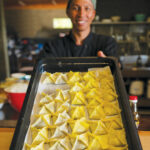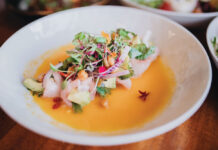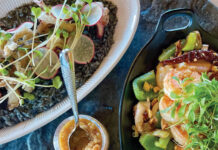Story by Becky Speere | Photography by Mieko Horikoshi
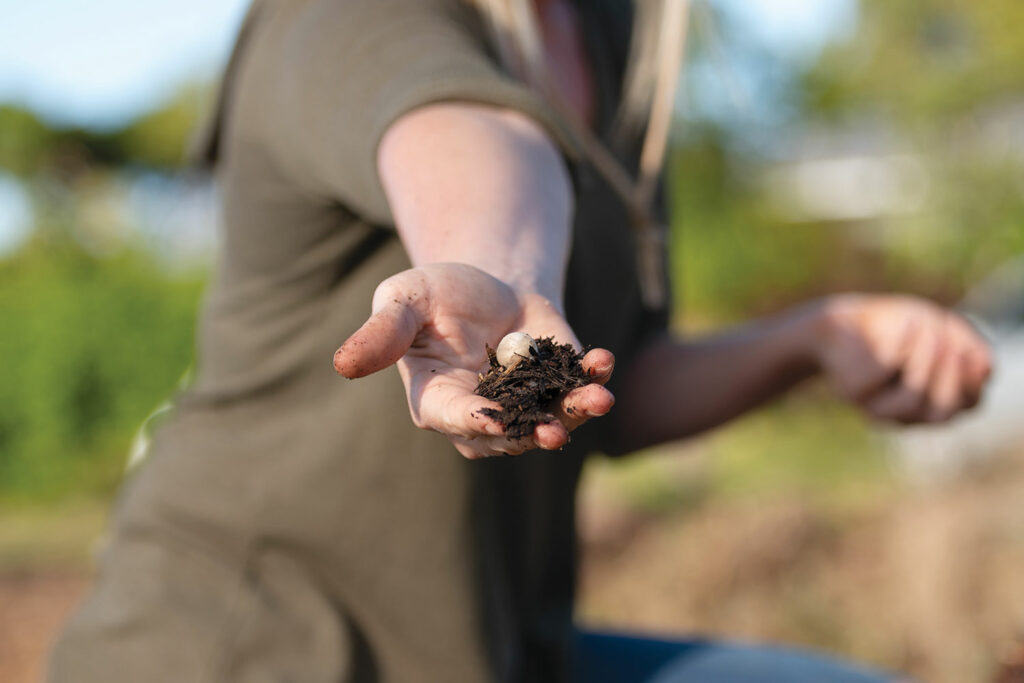
Aloha, mushroom freaks!
As soon as I read this email header, I knew I was going to love this workshop. The intensive backyard mushroom-growing course led by Dave Pollmiller and Chase McLean, owners of Tropical Fungi Academy, included two full days of online instruction, and two days of hands-on foraging, identifying and cultivating mushrooms. And as the icing on the mushroom cap: we would enjoy a curated fungal feast!
For the first part of the class, I learn via Zoom about the anatomy and growth cycles of mushrooms, and get a crash course on how to identify deadly versus edible varieties of fungi. In Hawai‘i, the most dangerous mushroom is Amanita mormorata, also known as the marbled death cap. According to Pollmiller, ingestion leads to violent vomiting and possible death. Accurately determining if a mushroom is dangerous or benign takes years of experience, but for the layperson it comes down to this common-sense edict: If in doubt, throw it out! Still, Pollmiller’s death-cap warning so adequately disturbs me that I order one of his suggested books the minute our Zoom class ends: Mushrooms of Hawai‘i: An Identification Guide.
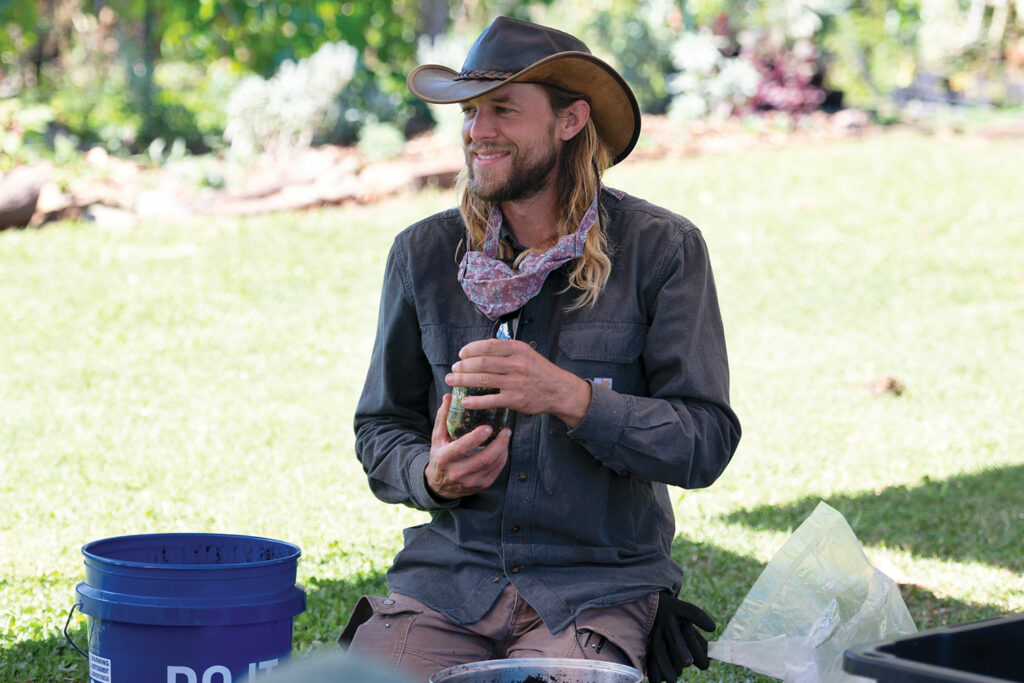
Later that week, we join Pollmiller and McLean on a private, five-acre estate for the hands-on part of the course. Our motley group of 20 “mushroom freaks” includes a retired professor of astronomy and oceanography from UH Maui College, a former flight attendant, a pro windsurfer and his two daughters, and an IT guy. Though our backgrounds vary greatly, we are all jazzed to get our ’shroom on.
Pollmiller and McLean break us into groups of five, hand each of us several sheets of wax paper, then dispatch us to forage for fungi. We return 90 minutes later, beaming with success, and spread out our finds on a 12-foot table. Our booty includes a multitude of brown, shriveled caps; some slimy reddish ’shrooms; and several varieties of fungi clinging to sticks and branches.
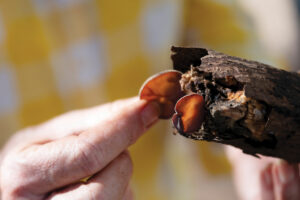
“This is more than we were expecting you to find!” McLean says happily. “Dave and I will identify them while you all take a lunch break.”
Our mushroom aficionados go off to get technical while we happily munch on our brown-bag lunches. I use the remainder of the break to stroll through the gardens, enjoy the flowers and muse over my mushroom findings.
We reconvene at 1 p.m., and McLean reiterates how delighted he is with our collection and the number of varieties we discovered.
“You’ve gathered a total of 19 different fungi, and we can identify nearly all of them,” says McLean. Nearly all? I’m reminded that even an expert can have problems identifying a particular mushroom, and once again mutter to myself, If in doubt, throw it out!
“It’s a good idea to keep a field book of all the mushrooms you come across,” says McLean. “Record its name, where you found it, the elevation, surrounding environment — for instance, a grassy area or beneath a specific type of tree — the color of the cap and whether it’s veiled, a description of the stipe [stalk], if there is an annulus [collar], and if the underside has pores or gills.”
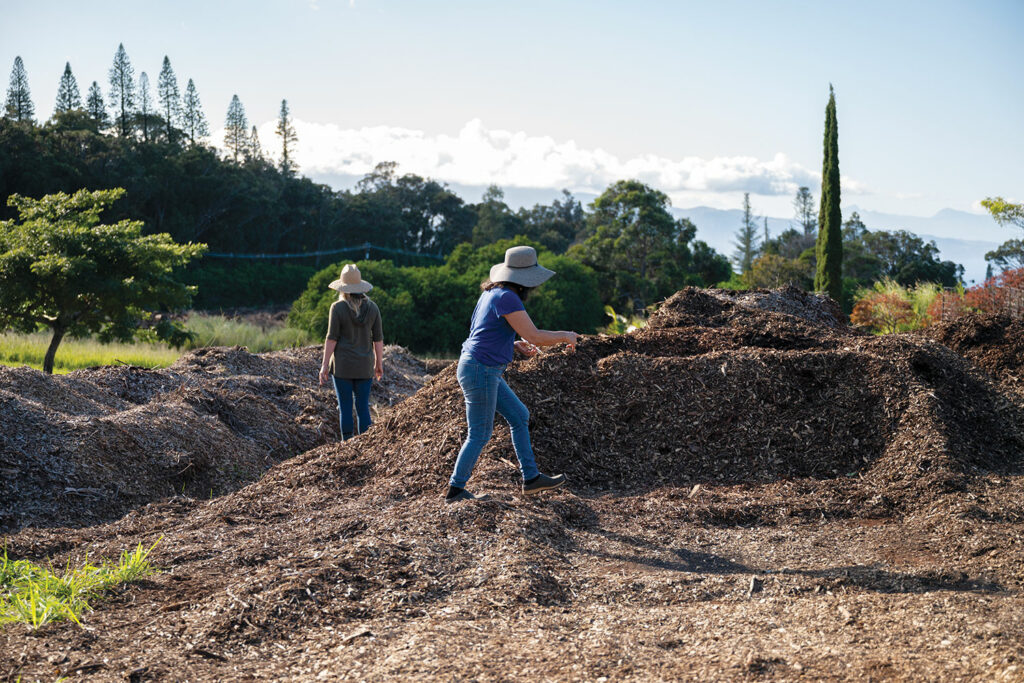
“We’ll also show you how to do an imprint — like a mushroom fingerprint — to further identify it,” adds Pollmiller.
We spend the rest of the afternoon identifying, dissecting and recording our mushrooms, before heading home for the evening.
We meet back at the property the next morning to learn about mushroom cultivation.
“Everyone can grow mushrooms in their own backyards,” says Pollmiller. “There are different ways to accomplish this with everyday items like cardboard, paper bags and banana leaves.”
“You can even grow them in coffee grounds,” adds McLean.
Under a large tent, we find the aforementioned materials, as well as a stash of power tools, freshly cut tree trunks, buckets and inoculating devices — long metal tubes with a plunger on one end that look like oversized syringes.
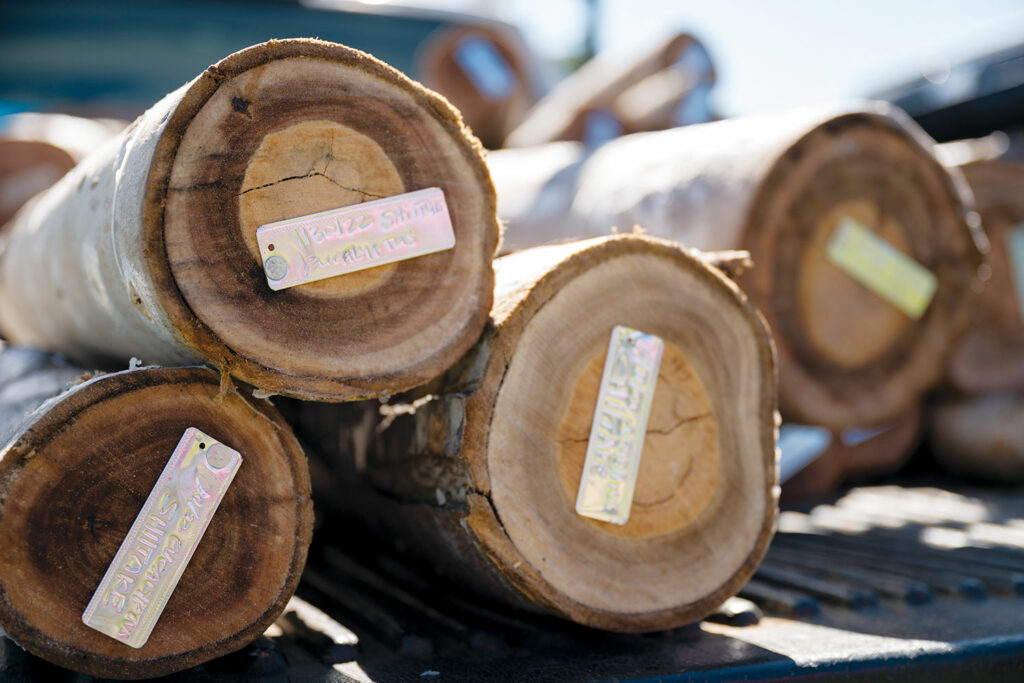
“You will be inoculating [injecting] these eucalyptus trunks with shiitake spores,” says Pollmiller. “First, drill half-inch holes along the length of the trunk, about six inches apart.” He does just that, then grabs an inoculating device and jabs it several times into a bag of shiitake substrate. “Next, insert [the contents] into the holes you’ve just drilled.”
Pollmiller plunges, fills and injects his log over and over, then moves to the next table.
“Each plug needs to be sealed completely with hot paraffin wax,” says McLean, demonstrating how to use a brush to carefully seal the holes. “Then tag the log with the date and mushroom-spore type — in this case shiitake — and put it in an accessible, shady area so you can check it regularly. It takes anywhere from six to eight months to produce fruiting bodies.”
Eager to DIY our own ’shroom farms, we organize a production line and get to work drilling, filling and tagging 40-some logs.
“Why don’t you use beeswax?” asks one man as we paint closed the holes in our logs.
“We’ve actually tried it, but found that ants eat the beeswax,” says McLean. “They don’t eat paraffin.”
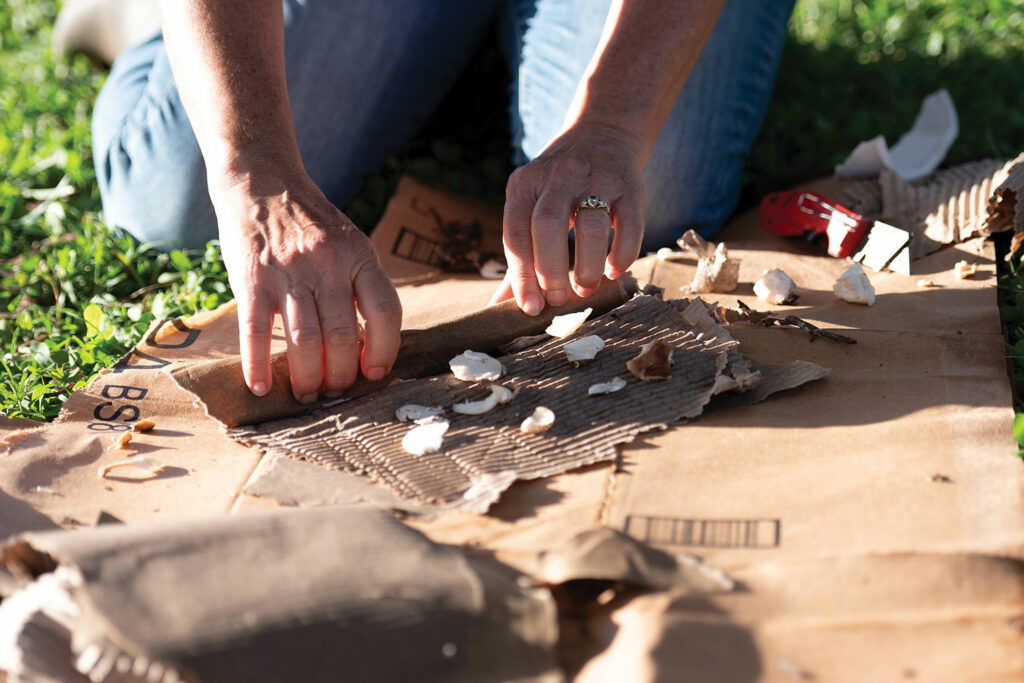
McLean and Pollmiller show us several other propagation techniques, including the burrito method, where you chop up store-bought oyster mushrooms, spread them on a damp paper bag and roll it up. We also drill holes in buckets and place banana leaves in alternating layers with Grey Dove oyster mushroom substrate. But my favorite is the parfait method: alternating layers of coffee grounds, damp cardboard strips and mushroom substrate in a Mason jar.
At end of the day, we eye our completed projects with satisfaction. Then we join Pollmiller and McLean for our promised fungal feast.
“Chef Nicot [Andrianarisandy] has prepared our evening’s menu,” says McLean. He holds up a branch covered with brown, jelly-like mushrooms and shakes it a little; the fungus wiggles to and fro. “He will demonstrate how to cook these wood ear mushrooms.”
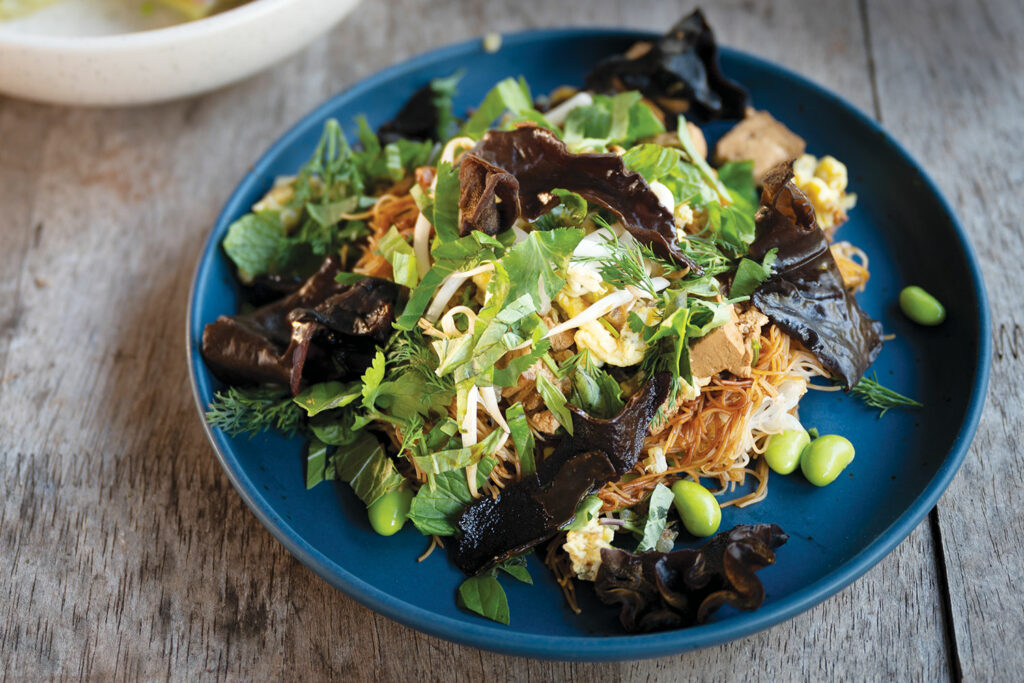
As if conjured by his words, chef Andrianarisandy appears with our meal: stir-fry noodles and shrimp-and-wood-ear-mushroom dumplings.
“Let’s eat!” says McLean, and we dig in.
For chef Andrianarisandy’s dumpling recipe, click here.
Tropical Fungi Academy
tropical-fungi-academy.thinkific.com | FB @tropicalfungiacademy | 808.664.7374
Chase McLean
Backyard Regeneration | backyardregeneration.com
Dave Pollmiller
Harvest Garden | 808.664.7374 | harvestgardenhawaii.com | IG @harvest_garden_hawaii | FB @harvestgardenhawaii

